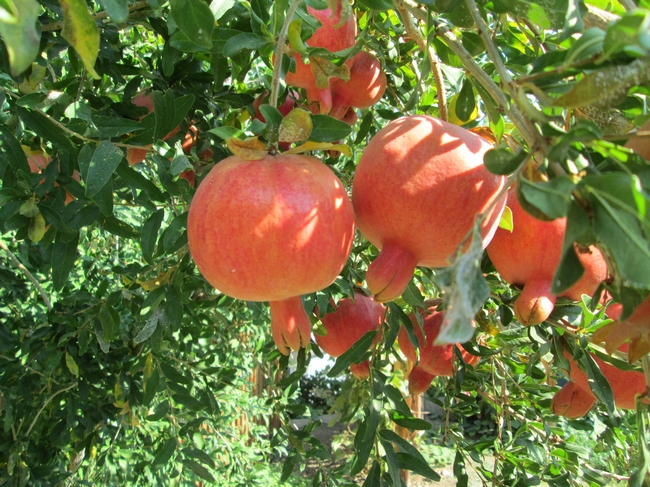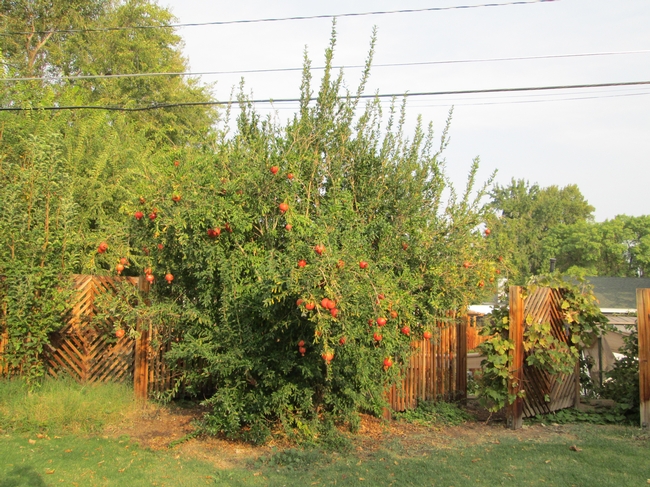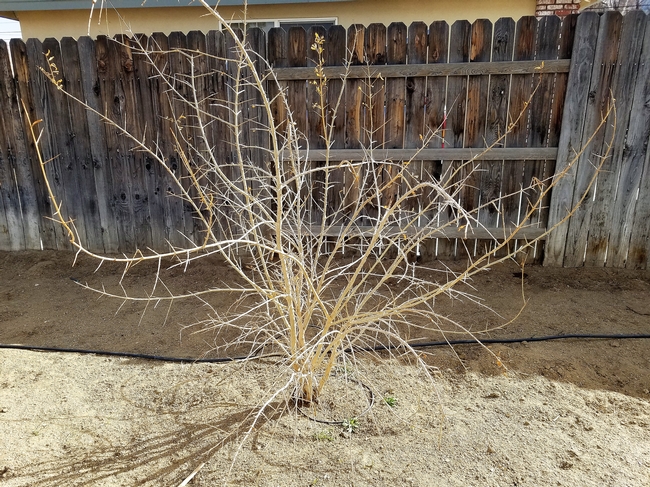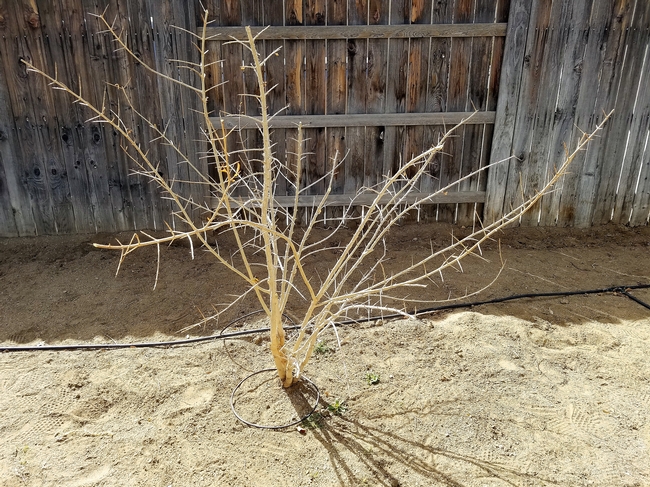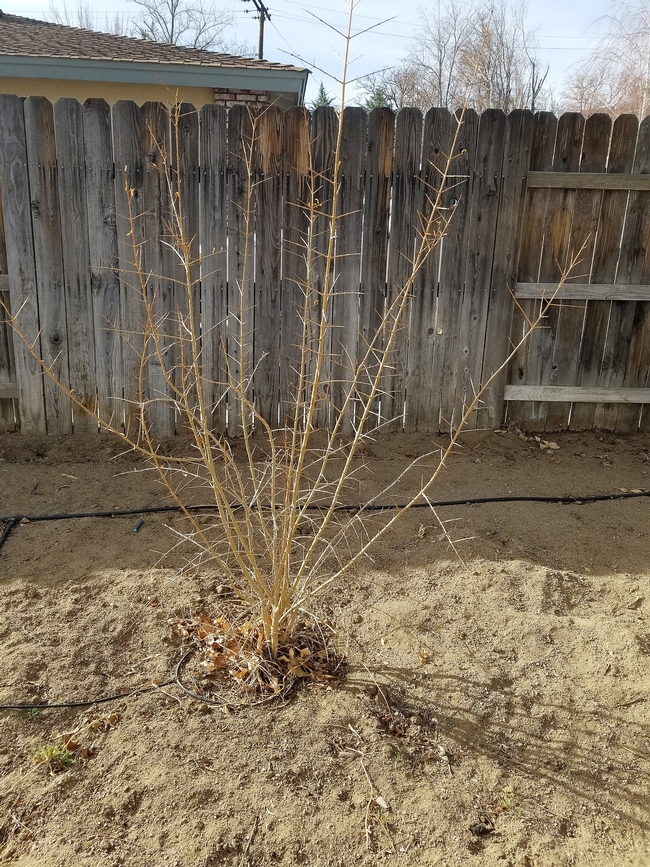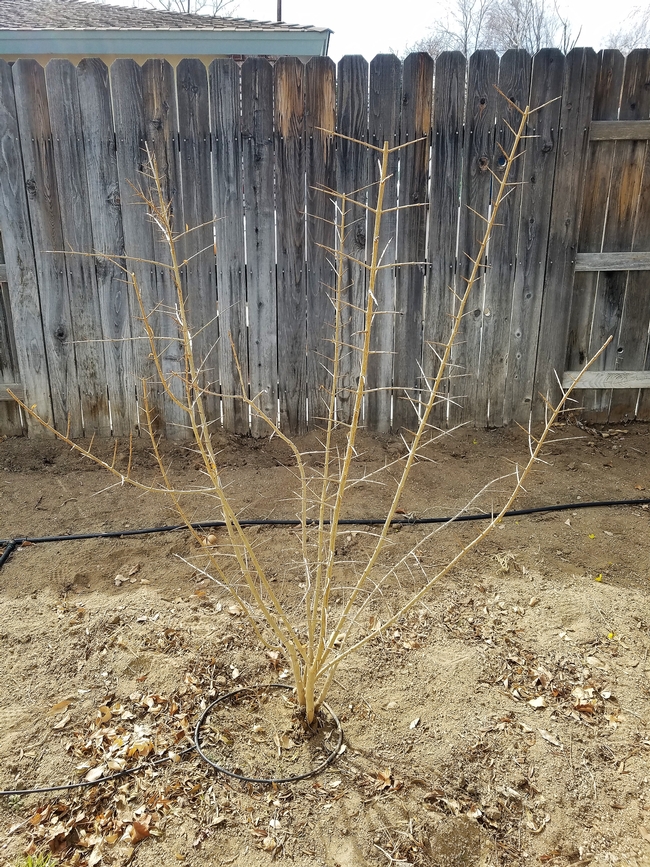- Author: Alison Collin
If you enjoy pomegranates you may be delighted to know that they will grow in the Owens Valley. They originally come from areas such as Iran and the Mediterranean areas. There are many varieties available, each with its own characteristics – some are sweeter, some more acidic, some have soft edible seeds and others have harder ones, some are better for juicing while others are delicious eaten fresh. The fruits are high in polyphenol anti-oxidants, and flavonoids.
Here is what you need to know about growing conditions:
- Zones: 7 -10 but must have long hot summers and if growing in the colder zones some protection from the north is advisable. If they get cut down by severe frosts most will sprout again from the base.
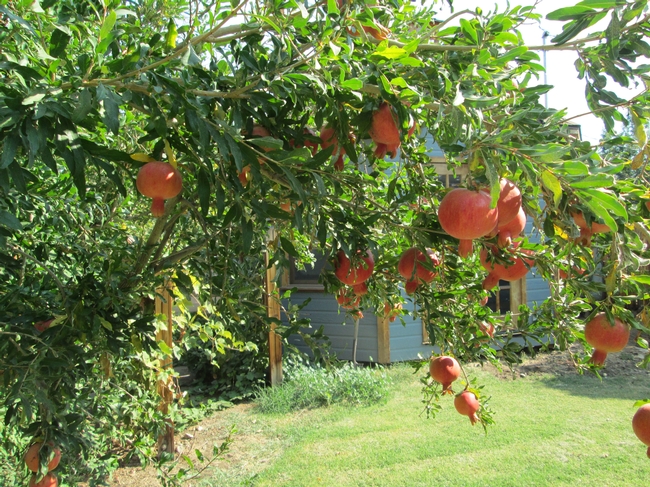
- Exposure: Full sun.
- Chill hours: Most need only 150-200 hours which our area easily provides.
- Soil: Any good, well-drained soil, even if alkaline.
- Irrigation: Regular watering is needed, but most can withstand some drought.
- Pollination: usually self-fertile so only one need to be planted.
- Form: Pomegranates grow as large bushes which can be pruned to 8'-10'tall and about as wide, but they can also be trained into a tree form. Some varieties are upright while others have more lax arching stems. There are some varieties that are dwarf.
- Harvest time: Late summer for earliest varieties through fall. Once ripe they will split open after rains. If harvested at its peak fruit will store in a cool dry place for several weeks.
Pomegranates have small leaves, and a twiggy habit so can be used as a screen. They have quite large reddish/orange flowers and look attractive in bloom, while the fruit generally comes in varying shades of red, from brilliant to a rich dark red, or even pink.
They do take time to become established, often not even flowering for a few years, but then are reliable so long as there are no adverse climate conditions. The only variety that I have experience with in the Owens Valley is 'Eversweet' which was chosen because it needed the shortest season for the fruits to mature. It took about five years to begin to fruit and then presented us with grocery bags full and consistently cropped since, although this year it had only a light crop (shown). So far it has generally been pest and disease free. There are some varieties which are claimed to begin fruiting earlier.
Many newer varieties have been introduced so it pays to read the descriptions in the specialist fruit catalogs to ensure that you are getting the features that you want.
Finally we can be successful with a plant that does better in our hot summers than in the gardening Eden of the Pacific Northwest!
For pest and disease information on pomegranates see: http://fruitandnuteducation.ucdavis.edu/fruitnutproduction/Pomegranate/Pomegranate_Pests_Deficiencies/Pomegranate_Insect_Mite_Nematode/
- Author: Trina Tobey
Pruning Pomegranates is easy!
As a first year Master Gardener, I am learning fruit tree pruning hands-on for the first time. When it came to pruning my pomegranates, I had to dig a little deeper than my Master Gardener Handbook for information. So while I was doing my research, I thought it would be a good idea to type it up and share it on our blog. I took before and after shots of my two year old pomegranate that I pruned for the first time.
Did I do it right? You be the judge.
You will prune your pomegranate to remove tree parts that bear poor quality fruit, to encourage fruit production, and to allow good light penetration. You might also prune your pomegranate to maintain a certain shape for aesthetics or height for easy harvesting. Some people shape their pomegranates like a tree while others use pomegranates like a hedge. Like with any fruit tree, you need to remove dead and damaged wood annually. Pomegranates have thorns, so you will want to wear gloves and long sleeves to protect your skin.
Naturally, pomegranates are a multi-trunk shrub. However, they can be pruned into a single or mult-trunk tree. Either way, the number of trunks should be limited from three to six, otherwise fruit production may suffer. I left four on mine. Pruning your pomegranate into a tree form can mean risking fruit production if you live in an area that freezes like we do. So for high desert areas in Inyo and Mono counties, a shrub form works best. Pomegranates form fruit on second year wood, so be careful not to prune too much or you may end up with no fruit.
After planting, cut the pomegranate to 60-75 cm (24 to 30 in). In the first year after planting your pomegranate, you should remove suckers from the roots and trunks after your primary 3-6 trunks are established. Continue this practice at least annually or as they arise.
After the first year, you will prune your pomegranate during dormancy after the risk of frost has passed but before full bloom in the spring. In late dormancy of the year following planting, prune the branches by 1/3, remove crossing branches, and leave 3-5 shoots per branch.
After the third year, you will only need to prune your pomegranates lightly each year to encourage fruit production. Pruning your pomegranate heavily will reduce fruit production but you will want to prune heavily after a year with little growth in order to re-invigorate your pomegranate. If you have a year with little or no crop, prune lightly. You will want to prune more heavily on the tops because this is where the vegetative growth occurs. Open up the middle of the plant to allow light and air to reach the blooms, which will increase fruit set. Thinning shoots on the end of the branches will increase fruit size and quality on the remaining shoots.
So there you have it. Pruning a pomegranate takes less time and makes less of a mess than peeling and eating a pomegranate. Good luck!
For more information:
- Ferguson, L., Glozer, K., & Bell, M. (2008). Shaping Pomegranates. UC Davis. http://ucce.ucdavis.edu/files/datastore/391-575.pdf
- Wilson Bros Garden (2020). https://www.wilsonbrosgardens.com/how-to-prune-a-pomegranate-tree-or-bush.html.
- Growing Pomegranates in California (1980) UC Agriculture and Natural Resources Leaflet 2459.https://ucanr.edu/sites/Pomegranates/files/122804.pdf


